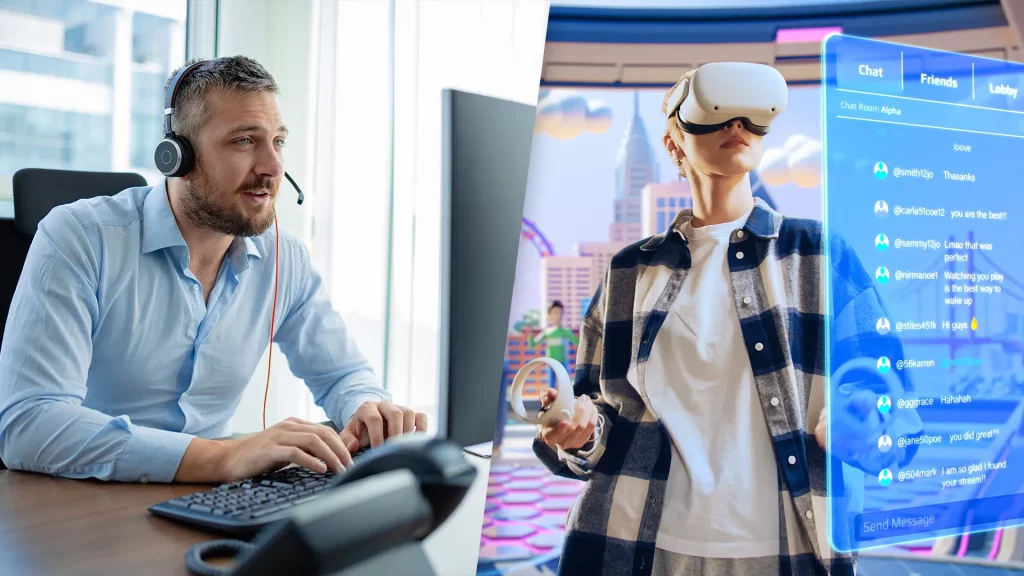Introduction
The internet has gone through remarkable transformations since its inception. From the early days of static web pages to the interactive and social-driven Web 2.0, the internet continues to evolve. But now, we’re on the cusp of another major shift: Web 3.0. This new phase of the internet promises to bring about a more decentralized, secure, and user-empowered online experience.
Web 3.0, often referred to as the decentralized web, represents the next step in the evolution of the internet. It builds on the capabilities of Web 2.0 but incorporates blockchain technology, cryptocurrency, artificial intelligence (AI), and peer-to-peer interactions. But how will Web 3.0 actually impact the way we experience the internet? Will it truly revolutionize the digital landscape, or will it be a slower, more gradual change?
In this article, we’ll explore what Web 3.0 is, how it differs from its predecessors, and what impact it will have on our daily online activities, ranging from how we interact with websites and content to how we control and manage our own digital identities.
1. What is Web 3.0?
Before we explore how Web 3.0 will affect the future, it’s essential to define what Web 3.0 is and how it differs from Web 1.0 (the early web) and Web 2.0 (the social, interactive web).
a) Web 1.0 – The Static Web
Web 1.0 was the earliest version of the internet, primarily consisting of static websites. Content was served in a read-only format, meaning users could only consume information without interacting with it. There was no personalization, and communication was mostly one-way, from websites to users.
Key characteristics of Web 1.0:
- Static content
- Limited interactivity
- Lack of user-generated content
b) Web 2.0 – The Social and Interactive Web
Web 2.0 is the second phase of the internet, characterized by user-generated content, social media platforms, and interactive websites. It’s the web we’re most familiar with today — Facebook, Twitter, Instagram, YouTube, and other platforms that allow us to interact with content and other users. It has opened the door for collaboration, social sharing, and personalization, but it has also created concerns over centralized control, data privacy, and monetization.
Key characteristics of Web 2.0:
- User-generated content
- Social media and collaboration tools
- Centralized control (e.g., Facebook, Google)
c) Web 3.0 – The Decentralized Web
Web 3.0, often described as the decentralized web, is an internet that is designed to give users more control over their data and interactions. It leverages technologies like blockchain, smart contracts, cryptocurrency, and decentralized applications (dApps). Unlike Web 2.0, where large corporations control most of the data and infrastructure, Web 3.0 aims to democratize the internet, making it more open, secure, and privacy-respecting.
Key characteristics of Web 3.0:
- Decentralization: No single authority controls the internet.
- Blockchain-based: Transparency, security, and immutability are ensured through blockchain.
- Ownership and privacy: Users have control over their own data.
- AI and machine learning: Smarter, personalized experiences.
- Tokenization: Cryptocurrency and digital tokens enable decentralized economies.
2. How Will Web 3.0 Change Our Online Experience?
Web 3.0 promises to transform our online activities in many profound ways. Let’s take a look at the key changes and their potential impact on users.
a) Empowering Users with Data Ownership
One of the most transformative features of Web 3.0 is the ability to give users full control over their personal data. In the current Web 2.0 environment, companies like Google, Facebook, and Amazon collect vast amounts of personal data, which they often monetize without offering users much control or transparency. Web 3.0, with the help of blockchain technology, allows users to own and control their data, deciding who can access it and how it is used.
For example, in Web 3.0, a user could decide to share their data with a service provider in exchange for a cryptocurrency reward. This incentivizes users to retain control over their information, rather than surrendering it to large corporations.
- Impact on online privacy: Users will have greater control over their online identities and digital footprints.
- Impact on monetization: Users could monetize their own data directly, instead of giving it away for free to platforms that profit from it.
b) Decentralized Identity and Authentication
Web 3.0 allows individuals to have a decentralized digital identity, where all personal information and credentials (e.g., age, nationality, education, etc.) are stored securely on a blockchain, accessible only by the user. This would eliminate the need for centralized systems like Google or Facebook to authenticate users when logging into third-party services. Instead, users would authenticate themselves using their cryptographic identity, ensuring their privacy and security.
- Impact on online security: Users no longer need to remember multiple passwords, and single sign-on (SSO) becomes more secure and decentralized.
- Impact on online trust: With blockchain-backed identities, fraudulent activities (e.g., identity theft) become harder to execute.
c) Tokenization and Digital Economies
Web 3.0 introduces the idea of tokenization: converting real-world assets or digital goods into digital tokens that can be bought, sold, or exchanged on a blockchain. This concept of digital assets is already changing industries like gaming, real estate, art (NFTs), and finance (DeFi).
In the Web 3.0 era, users could participate in decentralized economies, where they could earn tokens for contributing to platforms or communities. For example, users might receive tokens for curating content, providing feedback, or participating in decentralized finance (DeFi) protocols.
- Impact on online transactions: With cryptocurrencies, users will be able to perform instant, borderless transactions without relying on intermediaries like banks.
- Impact on content creation: Creators will have the ability to monetize their work directly, using smart contracts to ensure they are fairly compensated.
d) Decentralized Applications (dApps) and Smart Contracts
Web 3.0 introduces decentralized applications (dApps), which run on blockchains rather than on centralized servers. dApps can operate across a variety of industries, including finance, gaming, social media, and even governance.
These applications leverage smart contracts, which are self-executing contracts with predefined conditions. For example, a smart contract could automatically release funds when specific criteria are met, eliminating the need for intermediaries.
- Impact on user interactions: Users can interact with applications without trusting any single entity. The underlying blockchain ensures that all transactions and actions are transparent and secure.
- Impact on business models: Businesses can build trustless systems, reducing the need for third-party intermediaries and creating more efficient, automated processes.
e) The Metaverse: A New Virtual Reality
A key aspect of Web 3.0 is the development of the metaverse, a digital world where people can interact, work, and socialize in virtual spaces. The metaverse relies heavily on blockchain to create digital economies, virtual assets (like NFTs), and persistent identities. Virtual goods and assets, such as land, art, and fashion, can be traded or used across different virtual environments.
- Impact on online experiences: Users will be able to enter immersive virtual worlds for socializing, gaming, education, and even work.
- Impact on digital ownership: Through NFTs, users can own virtual assets in the metaverse, such as virtual land or digital art, creating entirely new forms of value.

3. Challenges and Concerns
While Web 3.0 holds great promise, there are several challenges and concerns that need to be addressed:
a) Scalability Issues
Blockchain technologies, especially those that rely on Proof of Work (like Bitcoin), can be slow and resource-intensive. Scaling decentralized networks to handle billions of users and transactions remains a significant technical challenge.
b) User Adoption and Education
The decentralized nature of Web 3.0 requires users to be more involved in managing their own data, security, and digital assets. This may be a barrier to entry for many individuals who are used to the simplicity of Web 2.0 platforms. Educating users about cryptocurrencies, wallets, smart contracts, and decentralized identity will be key to the widespread adoption of Web 3.0.
c) Regulation and Governance
The decentralized and global nature of Web 3.0 raises significant legal and regulatory challenges. Governments will need to develop frameworks for regulating cryptocurrencies, DeFi platforms, and decentralized organizations, while also protecting users from fraud and illegal activities.
4. The Future of Web 3.0
Web 3.0 is still in its early stages, but its potential is enormous. As blockchain technology matures, and as user adoption grows, we may see a profound shift in the way we experience the internet. Web 3.0 has the potential to democratize the web, giving users control over their data, privacy, and digital identities. It could transform industries ranging from finance to gaming, content creation, and even governance.
While there are still significant hurdles to overcome, Web 3.0 represents a more open, secure, and user-centric internet that could truly revolutionize the way we live, work, and interact online.
Conclusion
Web 3.0 is set to reshape the digital landscape by decentralizing control and giving users greater control over their online interactions. From data privacy to tokenized economies and immersive metaverses, Web 3.0 holds the potential to profoundly alter the future of the internet. Though there are still challenges to overcome, such as scalability and user education, the promise of a more open, secure, and user-empowered internet is within reach. As the decentralized web continues to develop, it will undoubtedly change the way we engage with the digital world — for the better.


















































